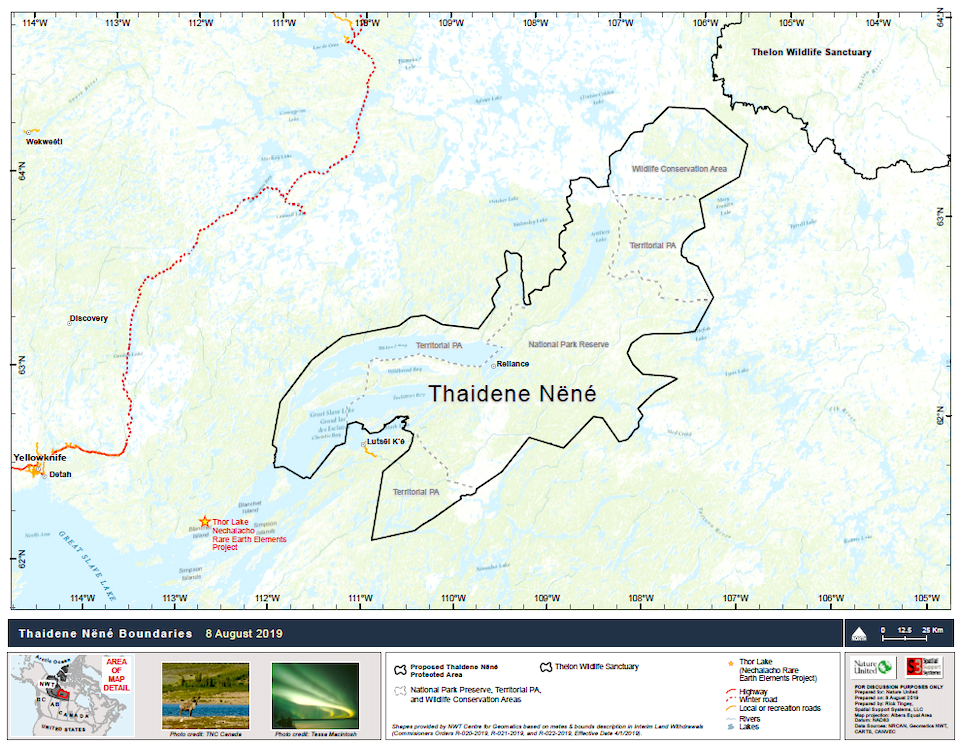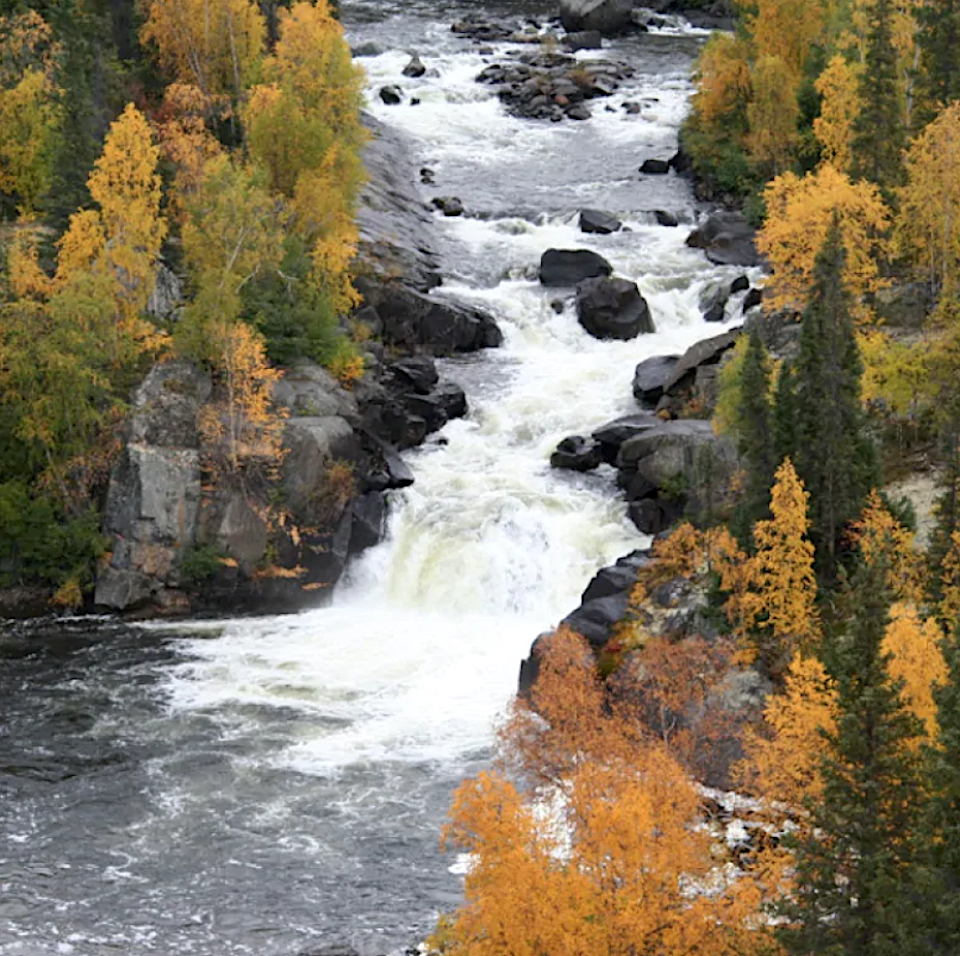
A nearly 5,500-square-mile pocket of wildness in the Northwest Territories of Canada has become that country's newest national park, one that was created with the help of First Nation cultures as well as provincial and federal governments.
"Nature is an important part of Canada’s cultural identity and vital to our health and prosperity," Parks Canada staff said in announcing the addition of Thaidene Nëné National Park Reserve to their roster of parklands. "That’s why the Government of Canada is doubling the amount of land and oceans protected across Canada by 2020, in collaboration with the provinces and territories, Indigenous peoples, and other key partners."
Thaidene Nëné lies at the eastern end of the East Arm of Great Slave Lake in the Northwest Territories. Back in August, Catherine McKenna, minister of Environment and Climate Change Canada and minister responsible for Parks Canada, signed agreements with the Government of the Northwest Territories, the Łutsël K’e Dene First Nation, the Northwest Territory Métis Nation, and the Deninu K’ue First Nation, and with the Yellowknives Dene First Nation in absentia, to establish Thaidene Nëné as a national park reserve, one of 47 national park reserves and national parks in Canada.
With a landscape that transitions from boreal forest to tundra, the Thaidene Nëné area is of great cultural importance to the Indigenous peoples who have lived along the shores of Great Slave Lake for hundreds of generations, a release from Parks Canada said. At approximately 5,500 square miles (14,000 square kilometres), Thaidene Nëné National Park Reserve encompasses the Artillery Lake area, a portion of East Arm’s Christie Bay, portions of Eileen and Whitefish lakes, the Lockhart River, most of the Snowdrift River, Tyrell Falls, Reliance, Fort Reliance, and many picturesque bays such as Maufelly, McLeod, and Wildbread.
According to Parks Canada, the landscape encompassed by the new park "is characterized by: numerous lakes, rivers and waterfalls, a striking archipelago of islands, peninsulas, landscape formations shaped by ancient ice sheets, dramatic cliffs, a variety of climates, soils and ecosystem processes. The vegetation varies from open woodlands and forests carpeted with mosses and shrubs, to lichen-covered tundra with occasional clumps of low-growing plants. This diverse ecological region is also home to many boreal and tundra mammals such as barren-ground caribou, moose, muskox, grey wolf, black and grizzly bear, red and Arctic fox, lynx, wolverine, otter, beaver, muskrat, as well as many species of birds and fish."
Thaidene Nëné National Park Reserve is adjacent to territorially-protected areas and a wildlife conservation area under the jurisdiction of the Government of the Northwest Territories. The territorial protected and conserved areas are a critical contribution to protecting the biological diversity, watersheds, connectivity for the migration of key species such as caribou, and boreal forest ecosystems as well as cultural landscapes important to Indigenous communities that comprise Thaidene Nëné. These areas will be managed under territorial jurisdictions through agreements with Indigenous governments as similarly as possible to the national park reserve to protect biodiversity and offer exceptional, interconnected experiences for visitors.
Thaidene Nëné will have the status of a national park “reserve” until land claims with the Akaitcho Dene First Nations, and the Northwest Territory Métis Nation have been settled. North Slave Métis Alliance also assert rights in the area.

Thaidene Nëne National Park Reserve/Parks Canada
Thaidene Nëne means ‘Land of the Ancestors’ in the Dënesųłiné—or Chipewyan—language. Indigenous rights will continue to be exercised and protected in Thaidene Nénë National Park Reserve, including the right to harvest food through hunting, trapping, and fishing.
The Government of Canada will be investing $40 million (CDN) towards infrastructure and for the operations of the national park reserve in the first 12 years and $3.4 million (CDN) annually for operations thereafter.
In establishing the park, the Government of Canada also announced it would provide over $7.9 million (CDN) for the establishment and operation of the Thaidene Nëné territorial protected and conserved areas, through the Challenge Fund, part of the Nature Legacy Initiative. This funding will assist in funding the establishment and operation of the territorial protected and conserved areas.
Together, these new areas, located immediately adjacent to the national park reserve, will protect an additional 4,719 square miles (12,222 square kilometres) of lands and waters critical to the protection of Thaidene Nëné, for a total of approximately 10,224 square miles (26,222 square kilometres).



Comments
Not sure how to pronounce that...Thaidene Nene?